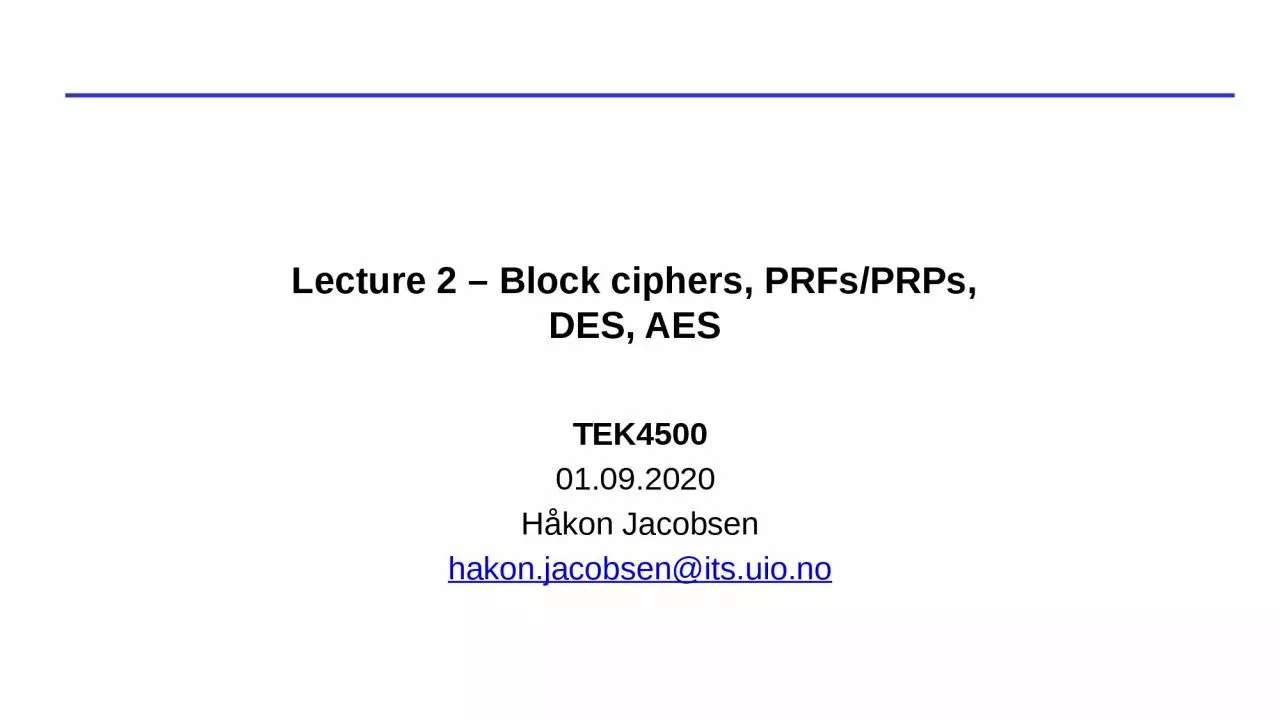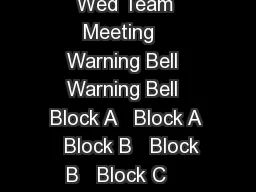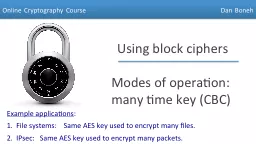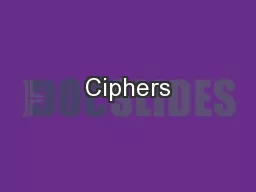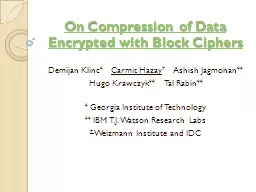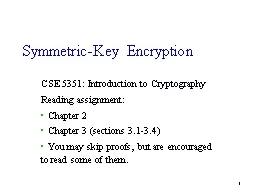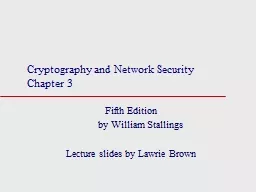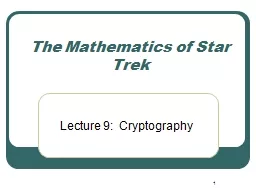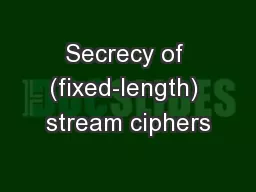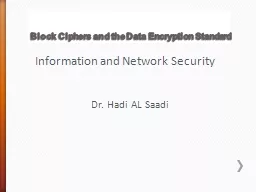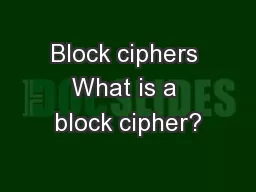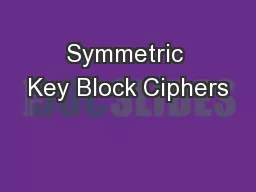PPT-Lecture 2 – Block ciphers, PRFs/PRPs,
Author : madeline | Published Date : 2022-06-11
DES AES TEK4500 01092020 Håkon Jacobsen hakonjacobsenitsuiono Ideal solution secure channels 2 Internet Alice Bob M Adversary Security goals Data privacy adversary
Presentation Embed Code
Download Presentation
Download Presentation The PPT/PDF document "Lecture 2 – Block ciphers, PRFs/PRPs," is the property of its rightful owner. Permission is granted to download and print the materials on this website for personal, non-commercial use only, and to display it on your personal computer provided you do not modify the materials and that you retain all copyright notices contained in the materials. By downloading content from our website, you accept the terms of this agreement.
Lecture 2 – Block ciphers, PRFs/PRPs,: Transcript
Download Rules Of Document
"Lecture 2 – Block ciphers, PRFs/PRPs,"The content belongs to its owner. You may download and print it for personal use, without modification, and keep all copyright notices. By downloading, you agree to these terms.
Related Documents

